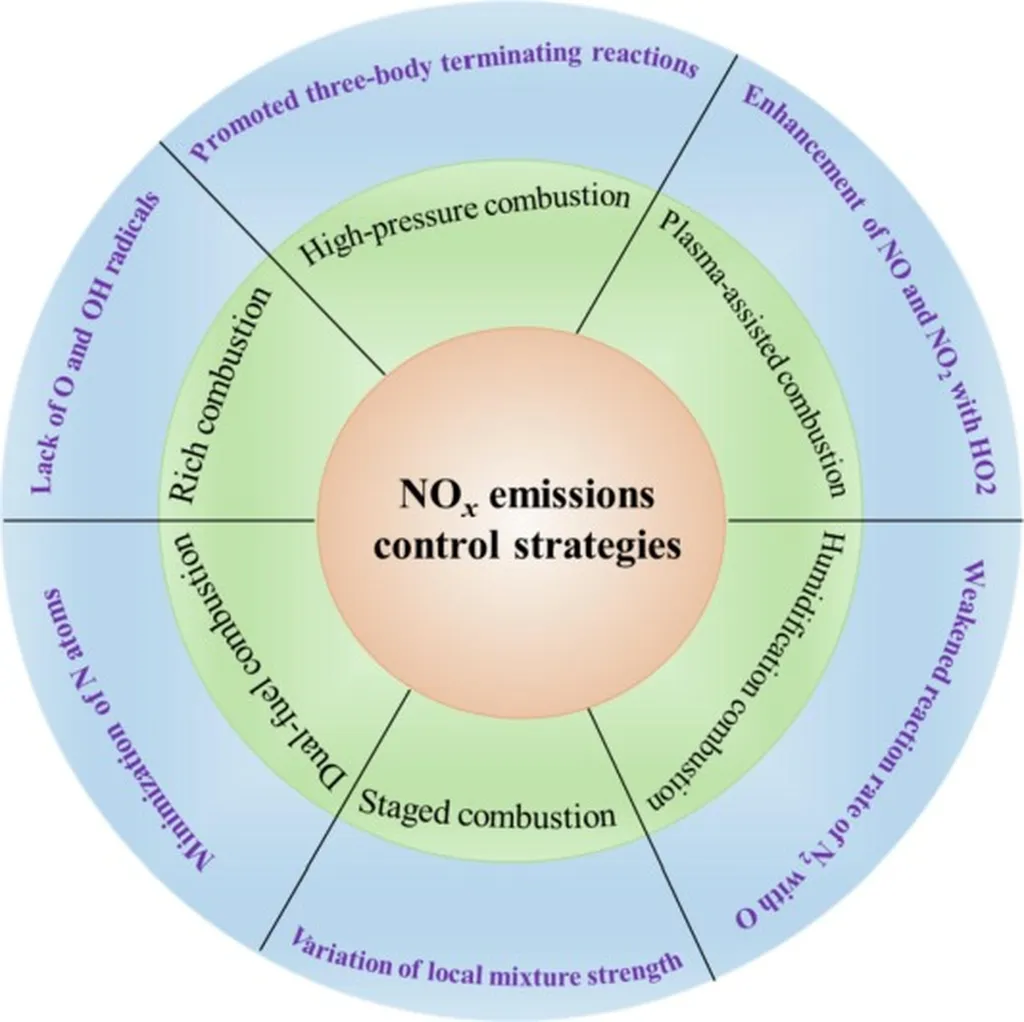In the quest for cleaner and more sustainable energy solutions, ammonia (NH3) has emerged as a promising zero-carbon fuel for power generation and transportation. Researchers Hernando Maldonado Colmán and Michael E. Mueller from the University of California, San Diego, have been exploring ways to mitigate the challenges associated with ammonia combustion, particularly the issue of reactive nitrogen (RN) emissions.
Ammonia offers several advantages over hydrogen (H2), including higher volumetric energy density, lower explosivity, and well-established transport and storage technologies. However, its poor flammability and flame stability, coupled with higher RN emissions compared to hydrocarbon fuels, have posed significant challenges. Partial cracking of ammonia into a mixture of ammonia, hydrogen, and nitrogen (AHN) improves its flammability and stability, but RN emissions remain a concern.
The researchers identified that the primary source of RN emissions in ammonia combustion is the unrelaxed emissions during the fuel-rich stage. This occurs due to the overshoot of thermodynamic equilibrium within the reaction zone of premixed flames, compounded by finite residence times that prevent the system from relaxing back to equilibrium. To address this issue, they introduced the “rush-to-equilibrium” concept for AHN combustion.
The rush-to-equilibrium concept aims to reduce unrelaxed RN emissions by accelerating the approach to equilibrium. This is achieved by subjecting a flow particle to a decaying mixing rate as it transits the premixed flame. This approach mitigates the mixing effects that hinder the particle’s approach to equilibrium and promotes chemical reactions that push the particle toward equilibrium, all within the constraints of finite residence times.
Using a state-of-the-art combustion model at gas turbine conditions, the researchers demonstrated that the rush-to-equilibrium concept has the potential to reduce RN emissions by an order of magnitude. Notably, this reduction is achievable irrespective of cracking extent, pressure, temperature, and other variables. The study also discussed practical implementation strategies, highlighting reasonable geometric and flow parameters characteristic of modern gas turbine combustors.
The research was published in the Proceedings of the Combustion Institute, a prestigious journal in the field of combustion science. This innovative approach could significantly enhance the viability of ammonia as a clean fuel for the energy sector, particularly in power generation and transportation applications. By addressing the critical issue of RN emissions, the rush-to-equilibrium concept paves the way for more efficient and environmentally friendly ammonia combustion technologies.
The practical applications of this research are substantial. For the energy industry, it offers a pathway to utilize ammonia as a zero-carbon fuel without the environmental drawbacks of high RN emissions. This could be particularly beneficial for gas turbine applications, where the rush-to-equilibrium concept can be integrated into existing combustion systems with minimal modifications. As the world transitions towards cleaner energy solutions, advancements like this are crucial in making ammonia a viable and sustainable option for the future.
This article is based on research available at arXiv.

